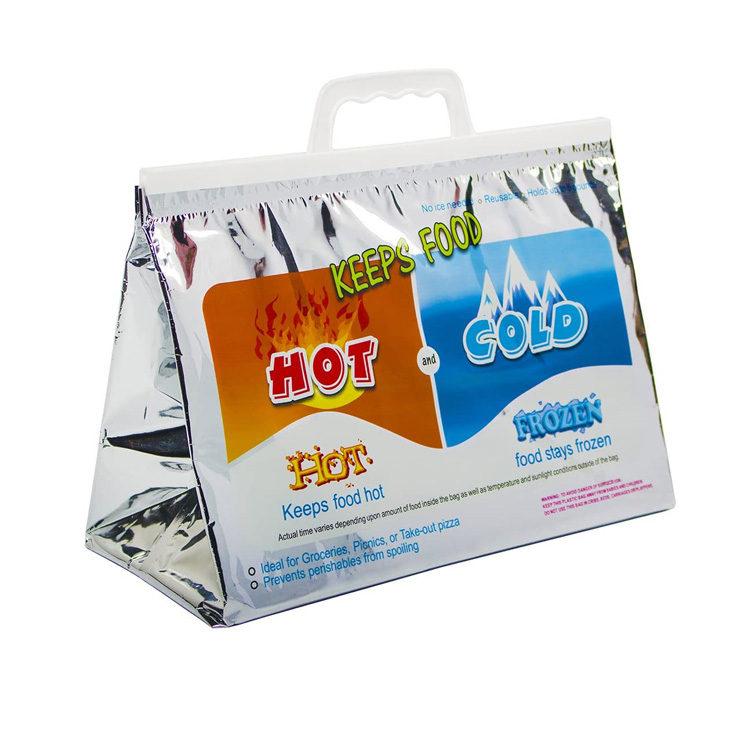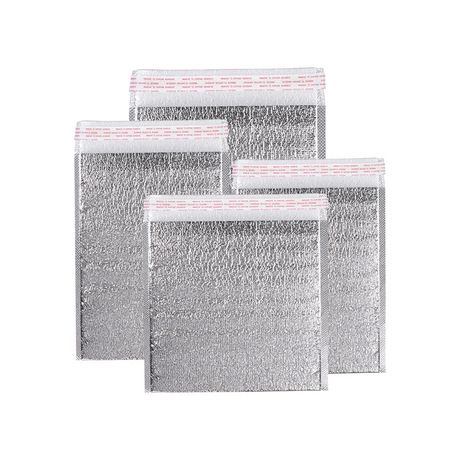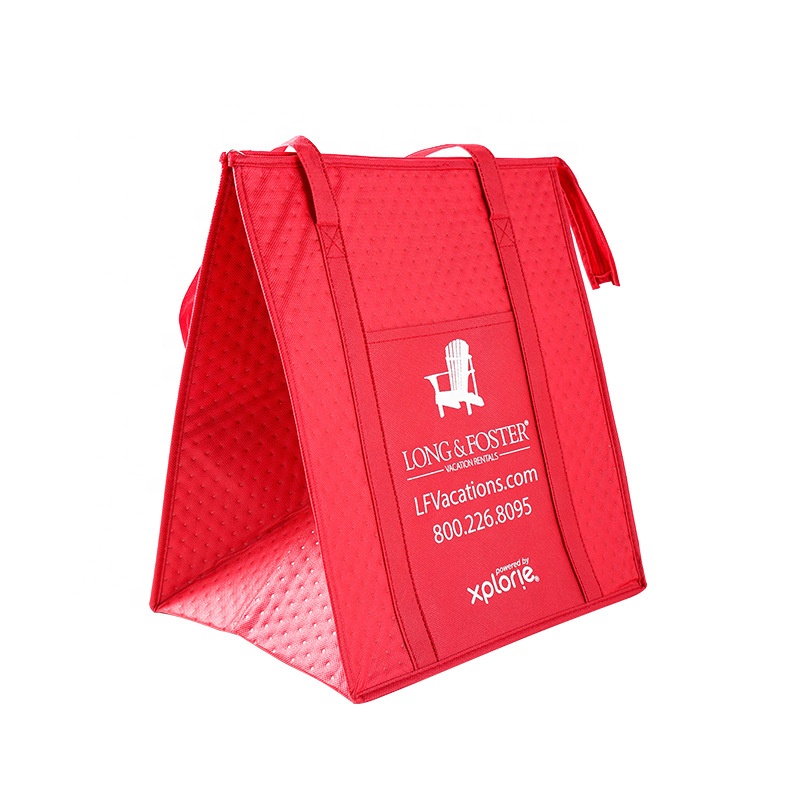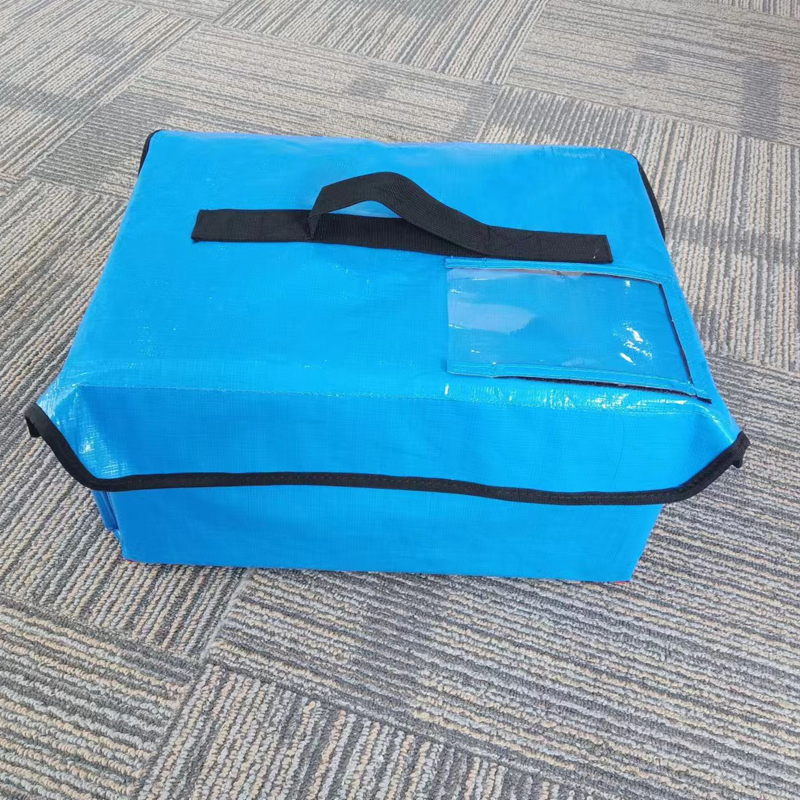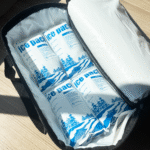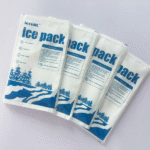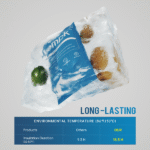Lakukan bungkus es kering meleleh? Memahami sublimasi es kering dalam rantai dingin
Many people ask, “Do dry ice packs melt?” The truth is, Paket es kering don’t melt, but they menghaluskan, transitioning directly from a solid to a gas without becoming liquid. This unique property makes dry ice a powerful tool in cold chain logistics. Dalam artikel ini, we will explore how dry ice behaves, how it differs from regular ice, and its role in temperature-sensitive shipments.
-
How dry ice sublimates and why it doesn’t melt
-
Key differences between dry ice and regular ice
-
Benefits of using dry ice packs in cold chain logistics
-
When to use dry ice versus traditional ice for shipping
-
The safety considerations and best practices for handling dry ice
Bagaimana Cara Kerja Es Kering?
Es kering tidak meleleh, itu menyublimkan. This means that when dry ice is exposed to air, dia changes directly from a solid to carbon dioxide gas, without ever becoming liquid. This sublimation process creates a very cold temperature, which makes dry ice ideal for freezing or maintaining the temperature of products during shipping.
Tidak seperti es biasa, which can turn into water, dry ice maintains its solid form as it evaporates. This property makes dry ice highly useful in the Industri rantai dingin, where maintaining precise temperatures is crucial.
Es Kering vs Es Biasa
| Milik | Es kering | Es biasa | Implikasi |
|---|---|---|---|
| State Change | Sublimasi (padat menjadi gas) | Meleleh (solid to liquid) | Dry ice maintains a colder temperature for longer |
| Suhu | -78.5° C. (-109.3° f) | 0° C. (32° f) | Es kering jauh lebih dingin, suitable for maintaining frozen goods |
| Penggunaan | Best for long-term freezing | Best for short-term cooling | Dry ice is ideal for sensitive shipments like food or medicine |
Why Doesn’t Dry Ice Melt?
Dry ice doesn’t melt because it doesn’t go through the liquid phase at standard atmospheric pressure. Karena menyublimkan, it transforms into Gas karbon dioksida rather than turning into liquid water like regular ice. The absence of a liquid phase means that dry ice remains solid at its sublimation point, making it an efficient cooling agent for Produk yang peka terhadap suhu.
This unique property of dry ice makes it a reliable cooling solution, terutama untuk mengangkut makanan beku, Persediaan medis, Dan bahan biologis yang membutuhkan kontrol suhu yang tepat.
Sublimation Process of Dry Ice
-
Tingkat sublimasi: Es kering menyublim dengan kecepatan sekitar 5–10 pon per hari depending on temperature and packaging.
-
No Liquid Water: Tidak seperti es biasa, dry ice doesn’t leave behind water or cause condensation, which is beneficial for products sensitive to moisture.
-
Durasi pendinginan: Dry ice can maintain ultra-low temperatures (around -78.5°C or -109.3°F), making it ideal for shipping perishable items.
When to Use Dry Ice vs Traditional Ice Packs?
Both dry ice and traditional ice have their uses in the cold chain industry, but knowing when to use each can help optimize shipping costs and product safety.
-
Es kering: Best for maintaining subzero temperatures untuk extended periods. It is ideal for produk beku, Sampel medis, Dan bahan biologis.
-
Paket es biasa: Ideal untuk short-term cooling needs atau refrigerated goods that don’t require the extreme low temperatures provided by dry ice.
Comparison of Dry Ice and Regular Ice for Shipping
| Faktor | Es kering | Es biasa | Kasus penggunaan terbaik |
|---|---|---|---|
| Suhu | -78.5° C. (-109.3° f) | 0° C. (32° f) | Dry ice for frozen foods and sensitive pharmaceuticals |
| Sublimasi vs Mencair | Sublimat ke gas, tidak ada cairan | Meleleh ke dalam air | Dry ice doesn’t leave water or condensation, ideal for wet-sensitive products |
| Lamanya | Bertahan lebih lama (hingga 48 jam) | Durasi yang lebih pendek (6-12 jam) | Dry ice for long-distance or time-sensitive shipments |
Benefits of Using Dry Ice Packs in Cold Chain Logistics
Dry ice is an indispensable tool in cold chain logistics for several reasons:
-
Durasi pendinginan yang lebih lama: Es kering menyediakan Pendinginan yang tahan lama power for shipping frozen or temperature-sensitive products.
-
Tidak Ada Residu Air: Tidak seperti es biasa, dry ice doesn’t leave behind moisture, which is crucial for goods that are sensitive to water exposure.
-
Suhu Lebih Rendah: It can reach temperatures well below the freezing point of water, ensuring products tetap beku untuk waktu yang lama.
These benefits make dry ice the go-to choice for industries like pharmaceuticals, makanan, dan bioteknologi, where temperature control is critical.
Safety Considerations for Using Dry Ice
Ketika es kering offers numerous benefits, it’s essential to handle it with care to avoid health risks. Karena es kering menyublim menjadi gas karbon dioksida, it can lead to suffocation in poorly ventilated areas. Always ensure that dry ice is transported in well-ventilated spaces to prevent CO₂ buildup.
Tips pengaman untuk menangani es kering
-
Kenakan sarung tangan pelindung to handle dry ice and avoid frostbite.
-
Pastikan ventilasi yang tepat during transportation to avoid CO₂ buildup in enclosed spaces.
-
Simpan es kering dalam wadah terisolasi to minimize sublimation and reduce the risk of gas leakage.
Contoh kehidupan nyata: In a recent case, a pharmaceutical company used dry ice to maintain a steady -80°C during the transportation of life-saving vaccines across a 48-hour journey. By carefully packaging the dry ice, the vaccines remained frozen without any damage due to melting or moisture.
2025 Trends in Dry Ice Usage for Cold Chain Logistics
Di dalam 2025, itu demand for dry ice di dalam Logistik rantai dingin terus berkembang. New innovations in kemasan berkelanjutan Dan teknologi pemantauan suhu are making it easier and more cost-effective to ship with dry ice.
Perkembangan Terbaru
-
Kemasan Ramah Lingkungan: Companies are integrating bahan biodegradable into dry ice shipping containers to reduce environmental impact.
-
Solusi Pengemasan Cerdas: Temperature sensors and real-time tracking are becoming more common in dry ice-based shipments to ensure temperature stability.
Wawasan pasar: The rise in demand for obat-obatan yang sensitif terhadap suhu has increased the use of dry ice for long-distance shipments, contributing to a 15% pertumbuhan in dry ice sales in the cold chain sector.
Pertanyaan yang sering diajukan {#FAQ}
Q: Can dry ice be stored in an airtight container?
TIDAK, dry ice should never be stored in an airtight container, as it can build up pressure and potentially cause the container to explode. Always use containers that allow gas to escape.
Q: Is dry ice safe for shipping perishable foods?
Ya, dry ice is ideal for shipping makanan beku, especially those that need to stay below freezing temperatures for long periods.
Q: Berapa lama es kering bertahan dalam wadah pengiriman?
Es kering dapat bertahan hingga 48 jam tergantung pada kuantitas dan isolasi yang digunakan. Untuk pengiriman yang lebih lama, dry ice will need to be replenished.
Ringkasan & Kesimpulan
Es kering tidak meleleh, itu menyublim langsung menjadi gas. This makes it an excellent cooling solution untuk long-term freezing Dan Barang yang sensitif terhadap suhu. Dry ice is the preferred choice for industries that need to ship frozen products, Farmasi, atau bahan biologis.
Langkah selanjutnya
-
Nilai kebutuhan pengiriman Anda: If you’re shipping frozen goods for extended periods, dry ice is the right choice.
-
Ensure safe handling: Always use proper ventilation and wear protective gear when handling dry ice.
-
Hubungi Tempk for custom solusi rantai dingin and ensure your products stay at the right temperature during transit.
Tentang tempk
Tempk adalah pemimpin dalam solusi rantai dingin, berspesialisasi dalam Paket es kering, Paket gel, and customized temperature-controlled packaging. We provide businesses with reliable, ramah lingkungan, and cost-effective solutions for shipping sensitive goods.
Looking for a cold chain solution? Hubungi Tempk for expert advice and custom solutions tailored to your needs.










